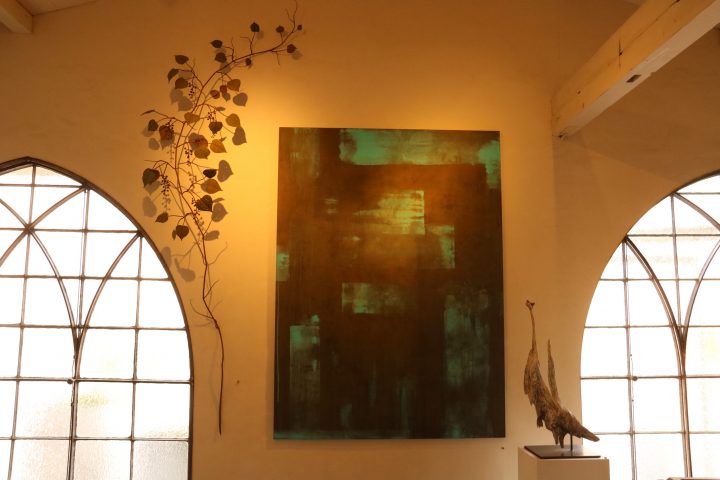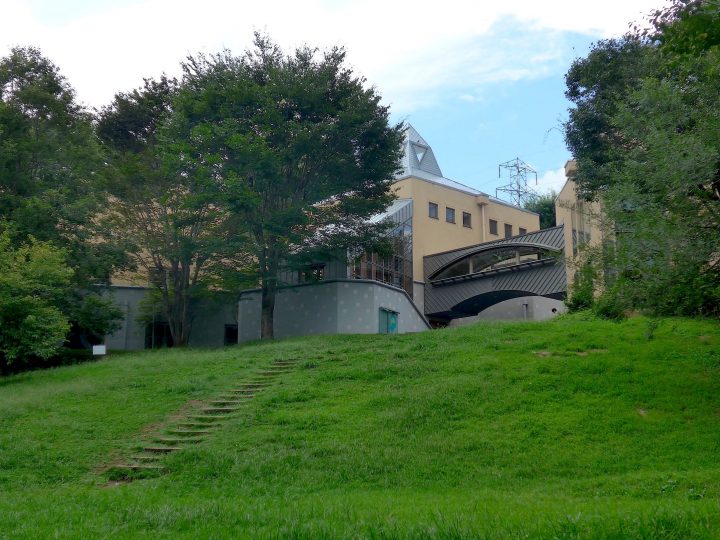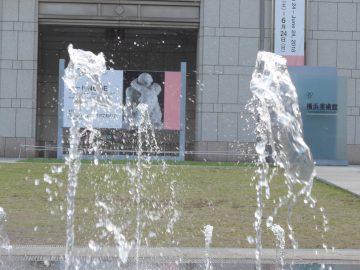Recreating a German project from 100 years ago "People of Miura" Exhibition

Expressing the town of Miura through portraits
--It seems that Aritaka-san recently moved to Zushi and Kuwamura-san recently moved to Miura.
Aritaka : I've lived in Tokyo for over 20 years and often came to Zushi for location shoots and such, but I happened to find a house I liked, so I moved there four years ago. At first it was quite a hassle to get to Tokyo, but the trains are convenient and I've gradually gotten used to it.
Osamu Kuwamura : I'm from the Kansai region and I'd always lived in Tokyo. I was working as an editor for a music magazine, and there were monthly deadlines and I was constantly staying at the office, but I wanted to have a more relaxed private life, so I moved to Miura.
Kuwamura Osamu : Miura is a very attractive town, with thriving agriculture and fishing industries, delicious food, and abundant nature. Even from our perspective as immigrants, there are many locals who love Miura, but we wanted to do an "artistic project" that would allow young people to rediscover the "charm of the region." A few years ago, our company released an app introducing vegetable direct sales stores on the Miura Peninsula, and while we were creating it, we visited each farm to gather content. Through these activities, we deepened our relationships with local people and learned about the problems the region faces, which made us feel that way.
Aritaka : I also connected with people in Miura through the food industry and participated in the activities of the Shokuzai Network. There were a lot of interesting people there, and I started taking photos of farmers and fishermen for my own work.
Osamu Kuwamura : I knew that Aritaka-san had taken such photos, so we had been talking about putting them into something for a while. Then, Kanto Gakuin University, which was selected for the Agency for Cultural Affairs' "Cultural Arts Promotion Project Utilizing Universities," approached us at the perfect time to come up with a plan through SaMAL, which connects art projects in Sagami Bay and the Miura Peninsula, and we started planning in earnest.
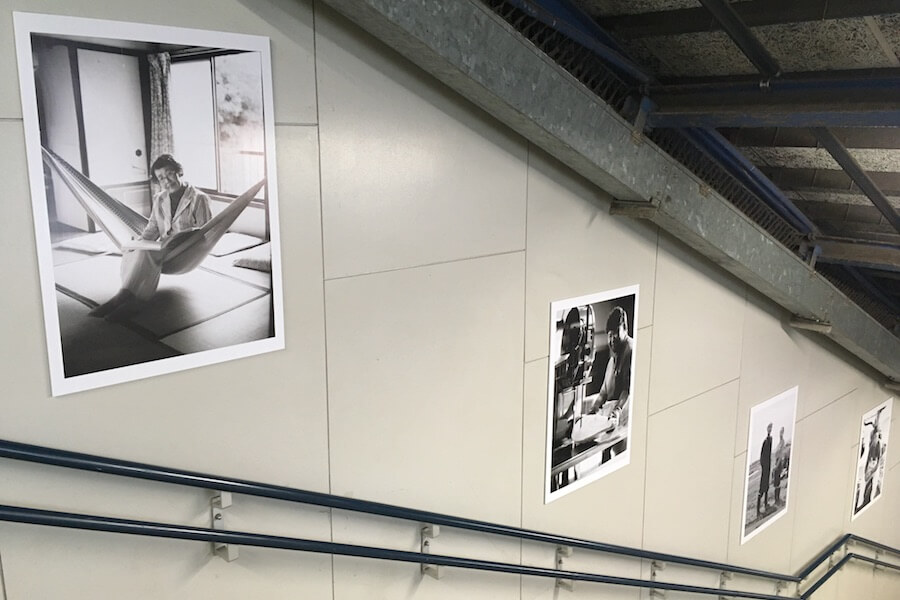
Exhibition at Misakiguchi Station
--Are the works in exhibition different from the photographs you have been taking?
Aritaka : This time, all of the photos were taken specifically for the photo exhibition.
Osamu Kuwamura : There was a photographer named August Sander who was active about 100 years ago, and he was doing a project to express one era through portraits of people living in the Rhine region of Germany, such as farmers, bricklayers, and chefs. I think it would be a little difficult to do that in Tokyo or Yokohama, for example. Most people who work in cities wear suits, so you can't really tell what they do by their appearance or texture. However, Miura has a lot of primary industries, so I thought that a project that was established in Germany 100 years ago could still be done in Miura, so I planned it.
Aritaka : When Kuwamura told me that the concept would be zander, I was convinced that Miura could shoot it from that perspective.
"The People of Miura" as seen by local residents
How did you choose your subjects?
Aritaka : I'm from Zushi and don't know all the people in Miura, so I went through Kuwamura and the others, and then I asked the executive committee members to recommend several people.
Osamu Kuwamura : I've only been living in Miura for about five years, so I didn't have any connections with people who had been there for a long time. When I started this project, I gathered people who were born and raised in Miura and young people to form an executive committee. There we had many discussions about what kind of people we should photograph to express Miura.
During the discussion, for example, one of the ideas that came up was to choose a doctor who has been in charge of school health checks for a long time as the subject. The doctor is 87 years old, but has been a doctor in Miura for 50 years. Many people who grew up in Miura know him. But people like us who came from outside don't know that such a person exists. It was the result of discussions in the executive committee that we were able to photograph such a person.
By the way, the doctor specializes in dermatology and urology, and he knew a lot about the history of the men of Miura, so I was able to hear some valuable stories.
Aritaka : Stories from the prosperous Showa era.
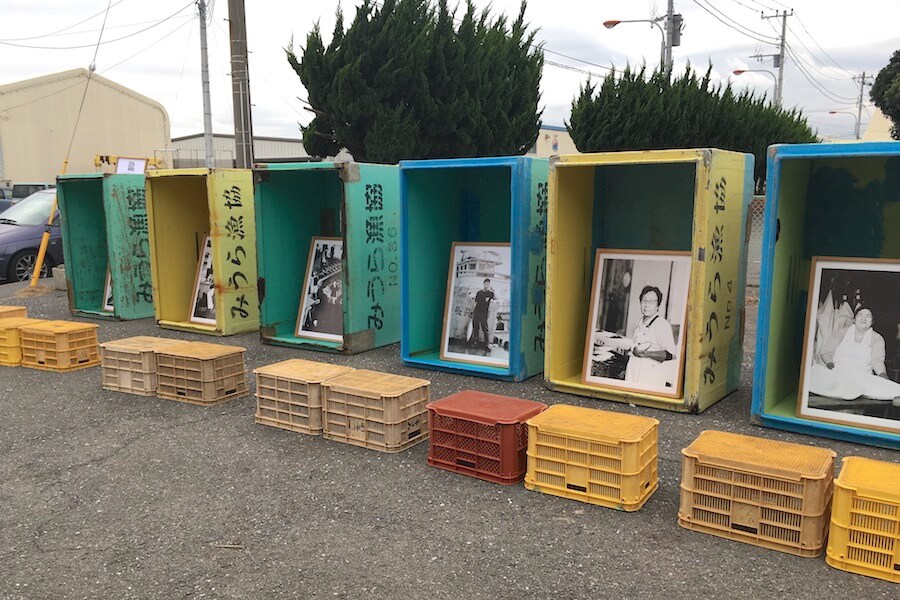
Exhibition at Misaki Port
Osamu Kuwamura : Miura was a bustling downtown area during the Showa era that prospered from tuna and had several movie theaters. Fishermen who had been out on deep-sea fishing trips would come back to the port and have fun. I've heard a lot of stories like that (laughs).
I think it was important in putting on this exhibition that the subjects were selected in discussions with people who were born and raised in Miura.
--What kind of people gathered on the executive committee?
Kuwamura Osamu : There are young farmers in their 20s and 30s, a wallpaper maker, a seed maker, a donut maker, a noodle maker, a civil servant, and also video creators.
Kuwamura Osamu : Not everyone is necessarily a creator; some were born and raised in the local area, and many of the people I met there previously held two events in Miura called "City Project Planning Seminars" to think about art projects.
Aritaka : The executive committee for the photo exhibition includes farmers and noodle makers, and although their work has no relation to photography, it's interesting that we're all creating something together.
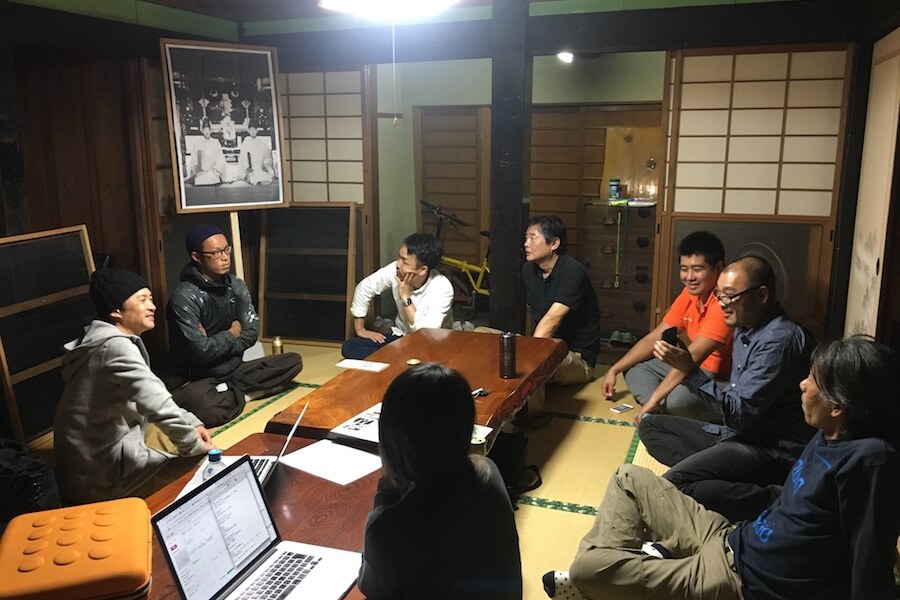
Executive Committee Members
Osamu Kuwamura : In preparation for the "People of Miura Exhibition," we held two events called "Thinking in Miura! Town Project Planning Seminar" to think about how to hold an art event in the town of Miura. The event was divided into two parts. In the first part, we invited members of the executive committees of "Manazuru Machinare" and "Hayama Art Festival" to talk about what it means to hold an art event in the town. In the second part, we had a discussion with the participants on "What kind of art event can we hold in Miura?". Some of the people who actively offered their opinions during this event are also on the executive committee. I think art is not something that is so intimidating, and it can start simply from the idea of doing something interesting. This event was an opportunity to open the door to the "People of Miura Exhibition" and encourage people to feel free to participate.
Kuwamura Osamu : I realized that there are quite a lot of young people who want to do something here to solve the problems that Miura faces, such as population decline, an increase in vacant houses, and infrastructure! High school students also came.
A one-on-one battle with the subject
--Did you get cooperation from the local community smoothly?
Aritaka : Because this was our first attempt, we explained everything in detail and carefully. There were so many things that happened that we could talk about it forever.
Kuwamura Osamu : None of the subjects were embarrassed.
Aritaka : I changed the style of the shoot so that I didn't chase after the person, but rather set up a tripod and asked them to get into the camera frame. Because of that style, no one was too intimidated, and everyone was properly prepared, and it felt like a one-on-one battle.
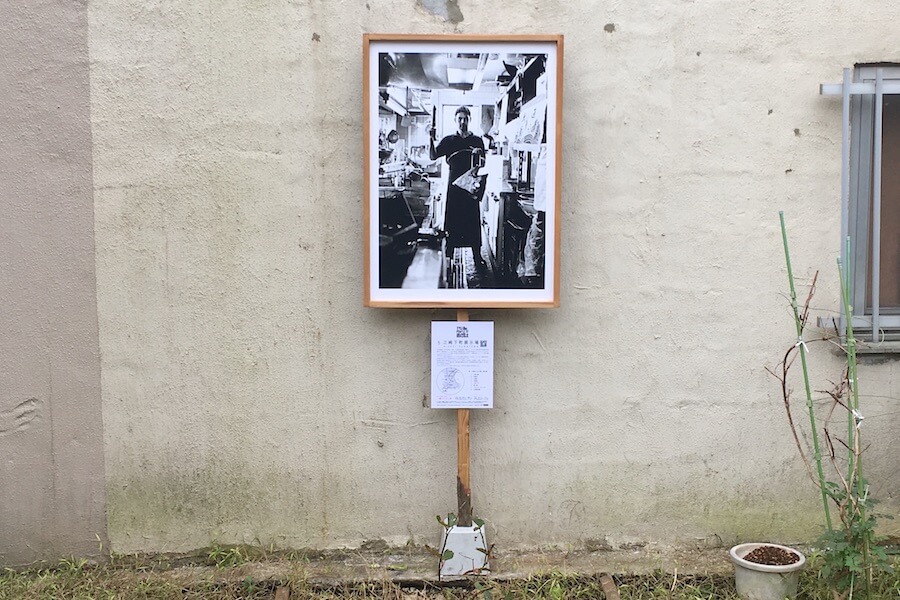
Exhibition at Misaki Shitamachi venue
Osamu Kuwamura : However, some of the subjects asked me, "Should I laugh?", but I asked them, "Please don't laugh." I did some directing in the "People of Miura" exhibition. But I didn't want them to laugh. I did direct the subjects to express themselves, but I didn't want them to laugh or lie. That's something I was very careful about.
Aritaka : At first, I was quite told not to laugh.
Osamu Kuwamura : We want you to look cool. Because we think it's cool too. But you're not always smiling when you're working, are you? Of course, there are jobs like that too. So it's good to be natural about that.
Aritaka : If it ends up like that, I'll end up being the one taking the photos, and it won't become a work of art. That's not interesting to continue, so I tried to somehow bring it into this style as much as possible. I also use almost the same prime lens for the photos. From the beginning, I've been taking photos of people of various professions, from the same viewpoint and at the same distance, with the same theme, so it didn't really bother me.
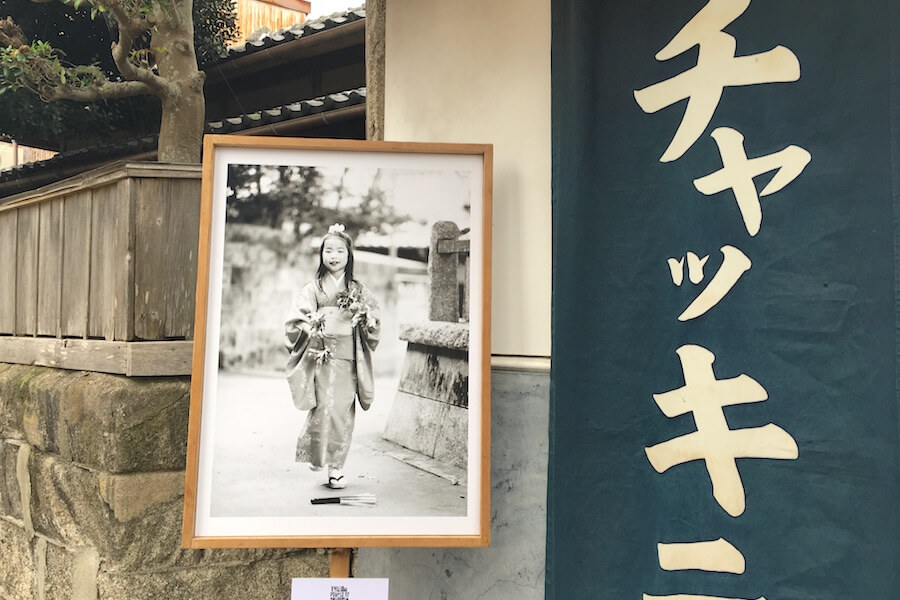
Exhibition at Misaki Shitamachi venue
Kuwamura Osamu : When shooting, the location was also a very important factor. When photographing the whitebait fishermen, we gathered at 5am, got on the boat together, and accompanied them on the whitebait fishing trip, fishing for about four hours before returning home. The boat couldn't leave without the whitebait, so we rescheduled about three times before we were finally able to accompany them. That's how some photos took a long time to take, while others were taken in five minutes. For example, I was able to quickly negotiate with the waitress at the coffee shop and photograph her on the spot.
During the shoot, we also filmed video interviews with the subjects. At the exhibition, we will not only display the photos, but also video interviews with the subjects.
A timeless landscape
--Was it decided from the beginning to make it in black and white?
Aritaka : When Kuwamura told me he wanted to do an exhibition at the fish market and I went to see the site, I thought that in this bulky, huge box, monochrome would definitely look cooler.
Osamu Kuwamura : I also thought that shooting in black and white would make it timeless. Colors always show the era. In black and white, I also aimed to show Zander's 100-year-old photos and modern photos in the same era. I think using a fish market as an art gallery is an unprecedented attempt. It's a very special place, so I think it will be a photo exhibition like no other you've ever seen before. This fish market is about 100 meters long. For example, there aren't many passages in Tokyo where you can go straight for 100 meters. I'm thinking of an exhibition that makes effective use of the straight passage of this market. Since it's a large venue, I'll exhibit works that are appropriate for the scale. I'd be happy if people who love photography and art could come.

Misaki Fisheries Local Wholesale Market
--What kind of activities do you have planned for the future?
Osamu Kuwamura : Miura is a photogenic town. Apparently there was a photoshoot in Misaki during the first exhibition, and about 250 amateur photographers came from all over the Kanto region. The old streetscape of Misaki's downtown area remains, and there are vestiges of the Showa era. The people who live there are also picturesque. There's something about the townscape and people that makes photography lovers want to take pictures.
Aritaka : That's when I first started going to Misaki. There are so many back alleys and things like that that I'm amazed they still remain. There's something nostalgic about the air, and it makes me want to go there with my camera in hand.
Osamu Kuwamura : The theme of the "People of Miura" exhibition was to express the city through portraits. I think we can do a photography-related project from a different angle.
The members of the executive committee for this event include many people who love music, so I think we can hold an art event in a different form to photography. I hope we can create an opportunity to express art and culture in the Miura area.
